Archaeologists in Jordan have uncovered a Roman-era tomb decorated with spectacular frescoes (Aramaic Comics) that include some very elaborate drawings. The unique feature of the frescoes is that the titles and descriptions were written in Aramaic, but using the Greek letters. Imagine speaking Aramaic but being surrounded by Greek culture and really knowing only the Greek alphabet, not your native one. That is how someone can write in Aramaic while using letters from unrelated language. It is akin to dictionary transliteration practice when foreign words a spelled phonetically using Latin characters. The drawings provide a testimony to how truly diverse and how cosmopolitan was the environment in the Hellenistic towns of the Roman empire. The dominant Greco-Roman culture and language permeated even the most traditional non-western societies.
Like other amazing discoveries, the nearly 2,000-year-old burial chamber was unearthed completely by chance. It happened during 2016 roadworks, in front of a school in the Jordanian village of Beit Ras. Since than a team of local and international researchers has been studying the find. They believe the tomb to be part of a necropolis in the ancient Greco-Roman settlement of Capitolias. This city was a part of the Decapolis, a region that brought together ten Hellenized cities. Each city provided key Greek-style institutions but was a part of the Roman Empire.
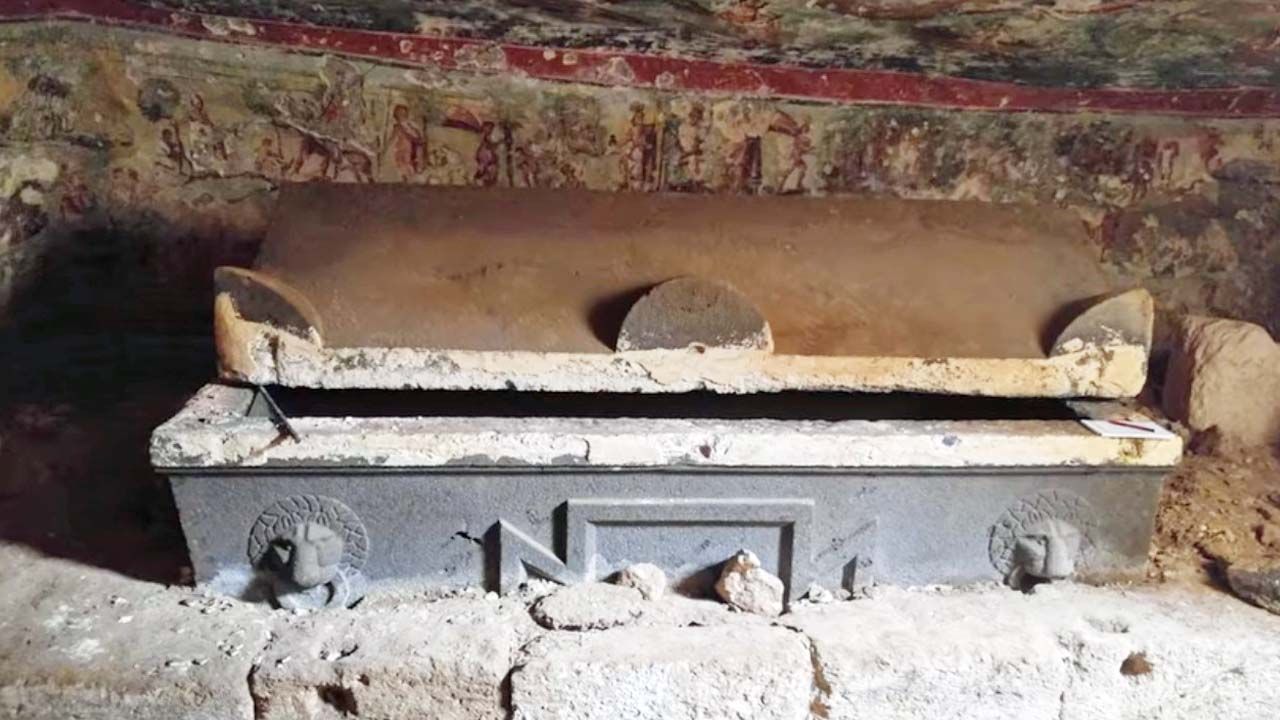
The 52-square-meter tomb is divided into two burial chambers and contains a large basalt sarcophagus. All images are in very good condition considering that there are indications the tomb has been looted in the past, says archaeologist and epigraphist Julian Aliquot. The tomb dates to the early days of the city, which was founded in the late 1st century C.E.
The most striking feature of this burial is the amazing tapestry of elaborate paintings that cover the walls and ceiling of the tomb. The drawings were dubbed “Aramaic comics” and they depict gods, humans, and animals, all painted on the walls of the largest burial chamber. Some 260 figures are represented in the colorful panels that show gods happily banqueting while humans bring them propitiatory offerings; peasants tending fields and vineyards, and construction workers building a rampart for the city.

“These teeming figures compose a narrative that is arranged on either side of a central painting, which represents a sacrifice offered by an officiant to the tutelary deities of Capitolias and Caesarea Maritima, the provincial capital of Judaea,” says Aliquot.
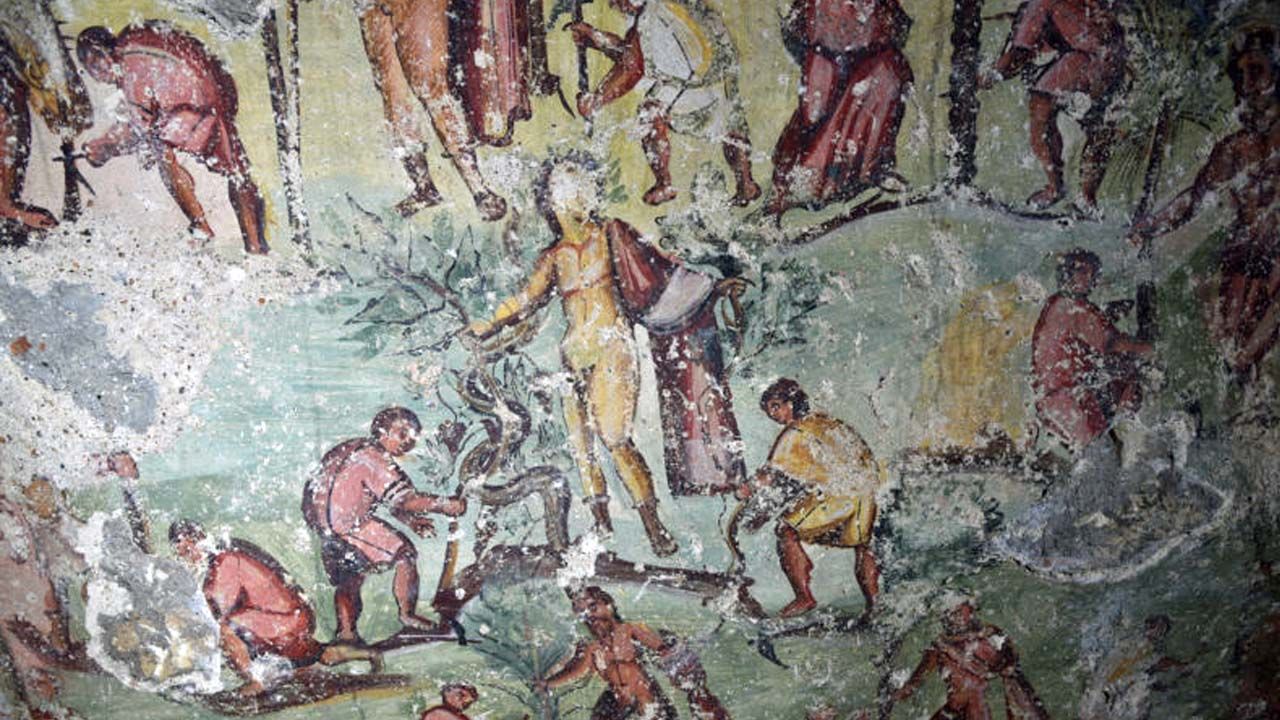
“This combination of the two primary idioms of the ancient Near East is extremely rare, and will help to better identify the structure and evolution of Aramaic. The inscriptions are actually similar to speech bubbles in comic books, because they describe the activities of the characters, who offer explanations of what they are doing (‘I am cutting (stone),’ ‘Alas for me! I am dead!’), which is also extraordinary.”
The researchers are inclined to see the art as an illustration of the various stages involved in the founding of Capitolias. This could have been a visual history of the city and it's life preserved for posterity.
Sources: CNRS News, Haaretz, Smithsonian Magazine, Biblical Aracheology.



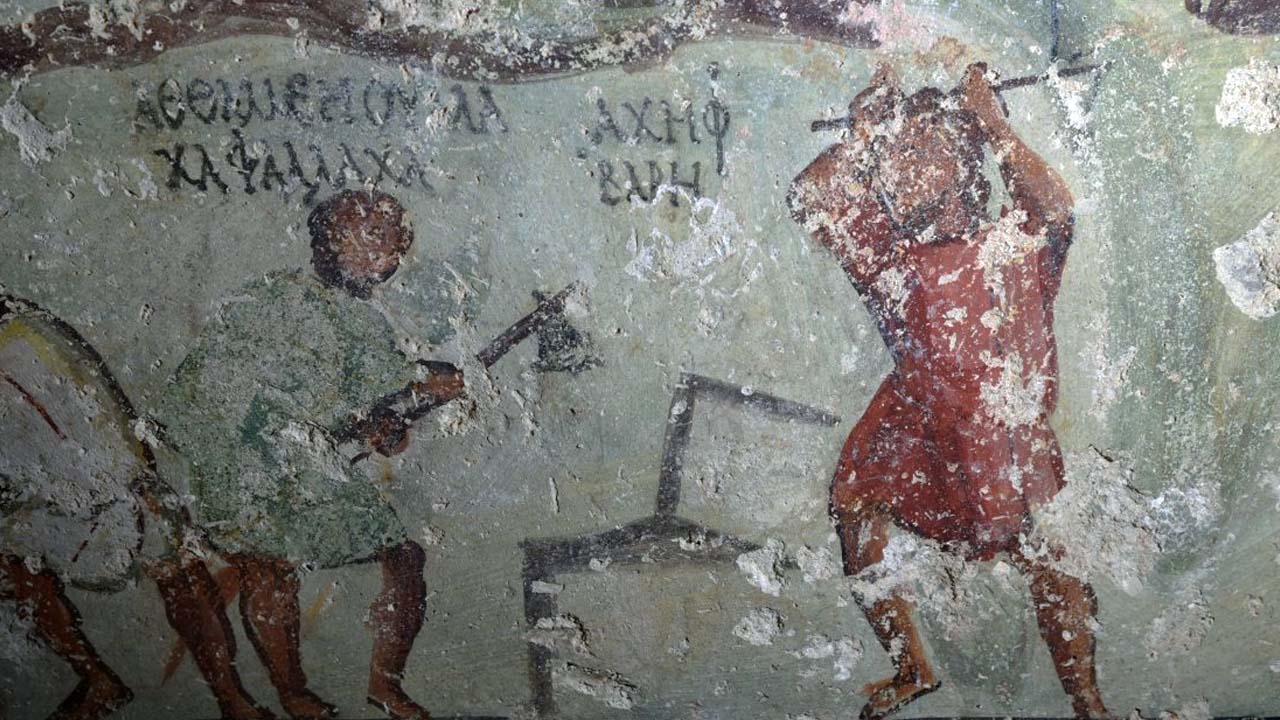



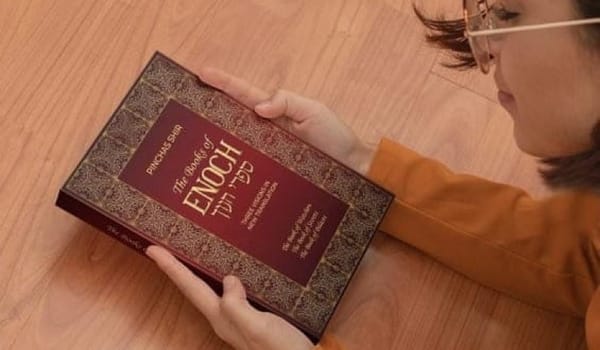
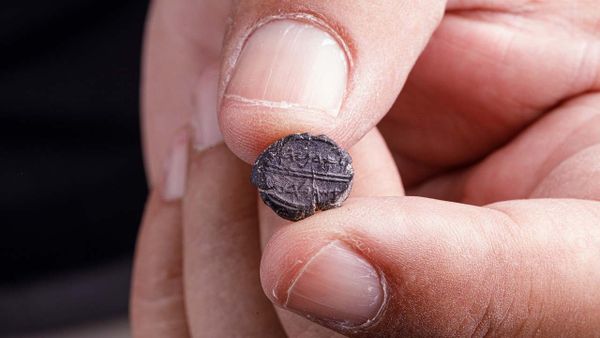


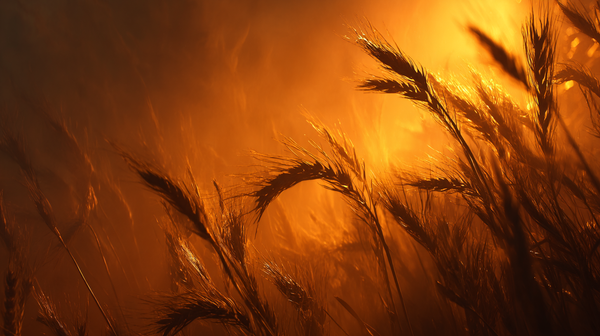
Member discussion